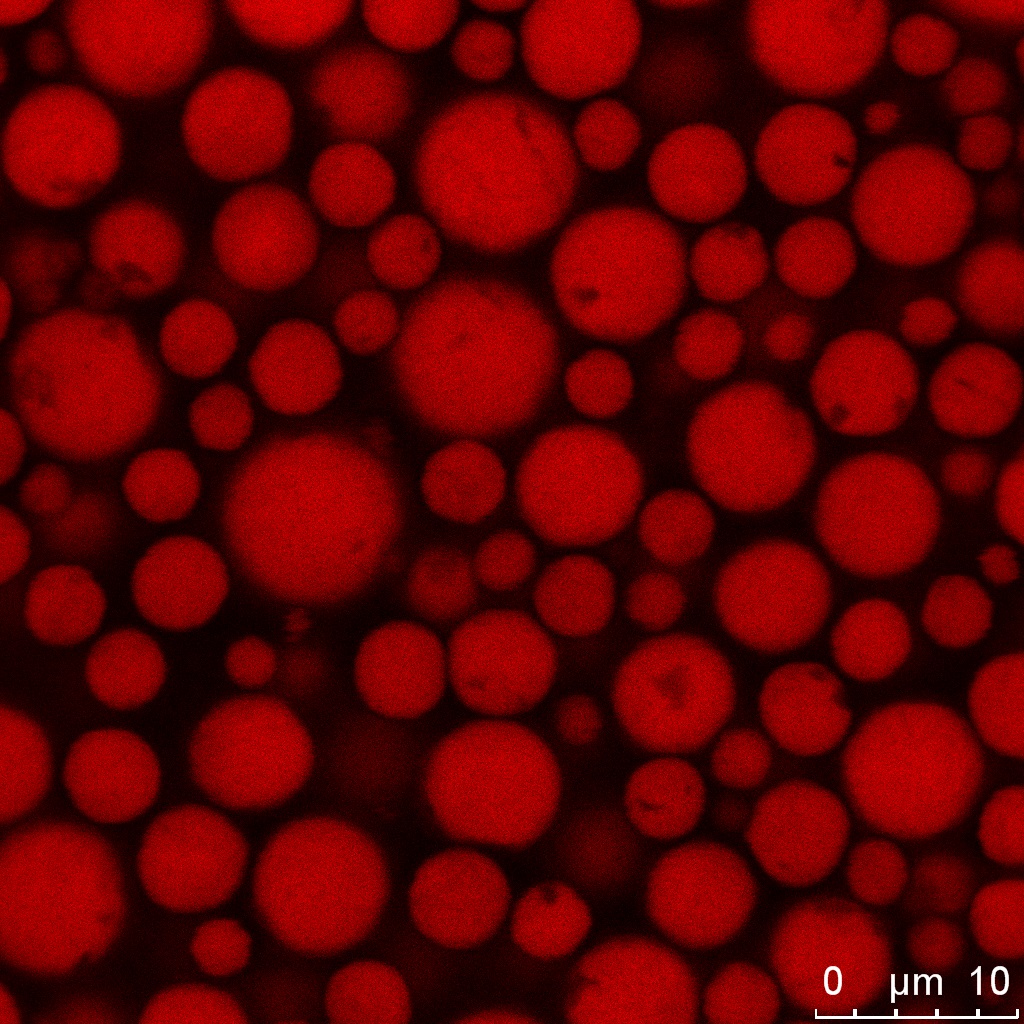
It’s a food’s structure that gives a carrot its crunch and a loaf of bread its fluffiness, and researchers increasingly believe that many of a food’s key properties relate to its structure.
Nature is able to assemble sophisticated structures and food is no exception, even right down to the microscopic scale. Food components such as protein, carbohydrate, fat and minor ingredients, when mixed, organise into a range of structures, and its becoming clear that many properties key to a food’s processability, nutritional and sensory qualities, and safety are related to its structure.
Plants are structured like honeycomb, called ‘cell wall’ structure. The video below clearly shows the defined cell walls in raw carrot – that’s why it’s crunchy!
Most foods have a ‘fluffy’ foam structure that forms when air bubbles are incorporated into a liquid, like bread, ice cream and meringue. The microscopic image below shows dough with air bubbles (black), gluten (yellow), starch granules (green) and protein (red).

Dough’s foam structure is full of air.
Then there are suspensions, which are a bit like oceans, with a sea of solid particles (the ingredients) suspended within a major component that is a liquid (quite often water). Think tomato paste, fruit juices and some sauces and soups.

Cooked pumpkin cells suspended in water.
The next microscopic image shows a suspension in 3D of cooked pumpkin in water. Notice how round the pumpkin cells are – that’s why pumpkin soup feels so smooth and creamy when we’re eating it.
Colloids, which have microscopic particles dispersed through another substance, are another type of structure. Milk is an emulsified colloid of liquid butterfat dispersed in a water-based solution. The third microscopic image is of milk, and the red dots are drops of fat dispersed throughout the liquid whey (black).

Milk has a colloid structure.
There are other structure types as well – solutions, emulsions and gels, which all behave differently to each other.
The structure of a food affects the way we chew it, how it breaks down in our mouths and our perception of its texture and flavour. And because each structure also breaks down differently in our digestive system, the release and bioavailability of small molecules such as minerals, vitamins and polyphenols is also different.
Because of all these factors, food structures are increasingly being recognised as important in technology innovation for the development of healthier foods.
And as there is increasing awareness that structure has a significant effect on the bio-availability of nutrients, the focus of developing nutritional guidelines is shifting away from the traditional approach of simply assessing the nutrient composition of foods.
We are hosting the Food Structures, Digestion and Health Conference on 24 – 27 October, which will discuss the role of structure in designing foods for nutrition and wellbeing.


3rd October 2013 at 7:23 pm
I meant to add milk to bovine GH above
3rd October 2013 at 7:21 pm
I don’t like the idea of designing food. We have adjusted in two billion years of
evolution as prokaryotes to what we eat other plants and animals and fungi and
protists and we can eat them because they are like us.
Then we as australopithecines evolved with and adjusted to cooked meat and as
hominids to more cooking a hundred thousand years ago and finally ten thousand
years ago as so called sapiens began to breed plants and animals in the agricultural
revolution.
But we havent adjusted to GM wheat corn soy potato and rice or high fructose corn
syrup or recombinant DNA bacterial bovine Growth Hormone so now we reap what
we have sown or cooked up we have an epidemic nay a pandemic of obesity
metabolic syndrome diabetes mellitus various cancers autoimmune diseases
and circulatory diseases.
So monkeying with Nature and Evolution is a fools a damn fools game and we are
paying for it in suffering illness and death.
No we do not need any new foods we need to ban and destroy all frankenfoods
and return to Palaeolithic or early Neolithic food profile!!!